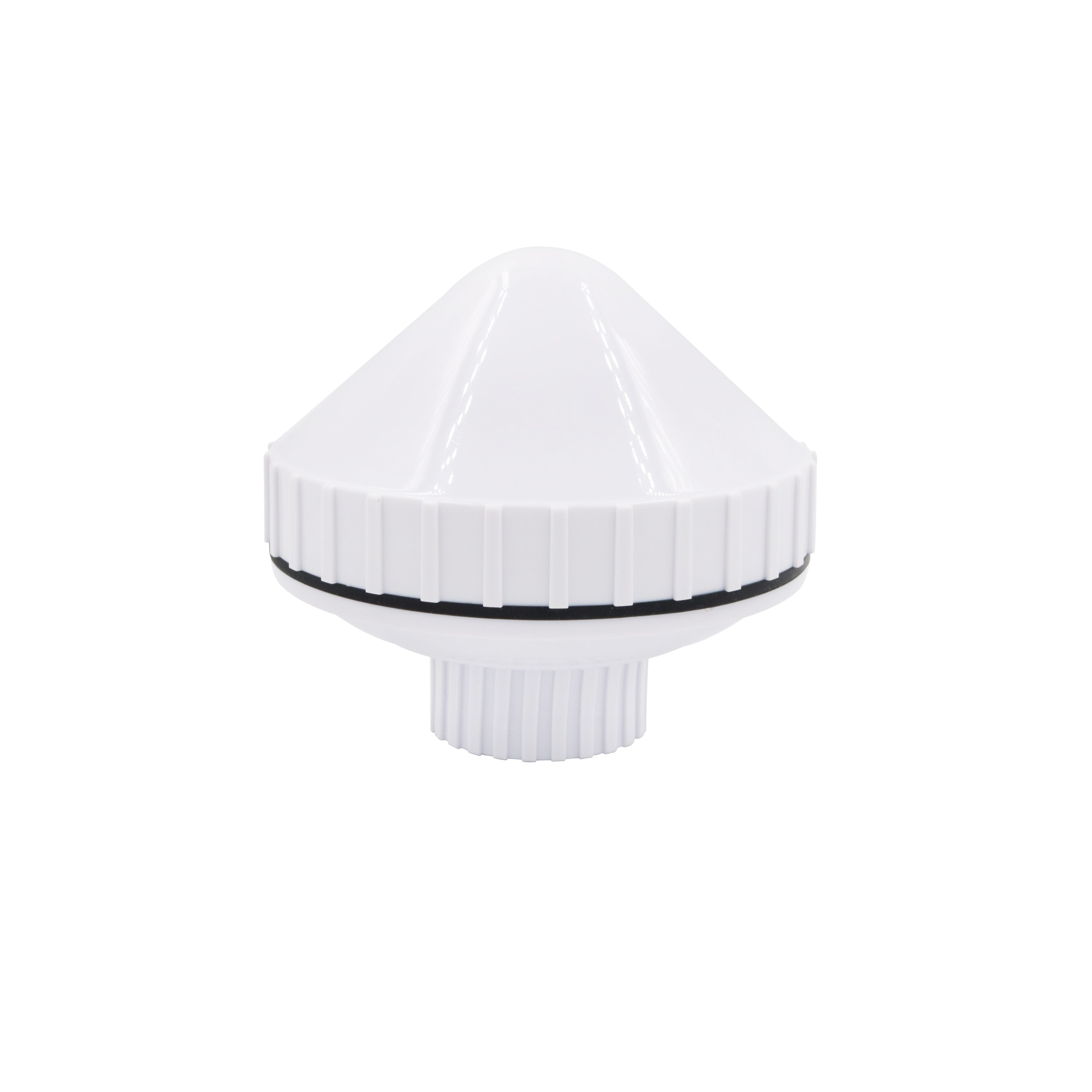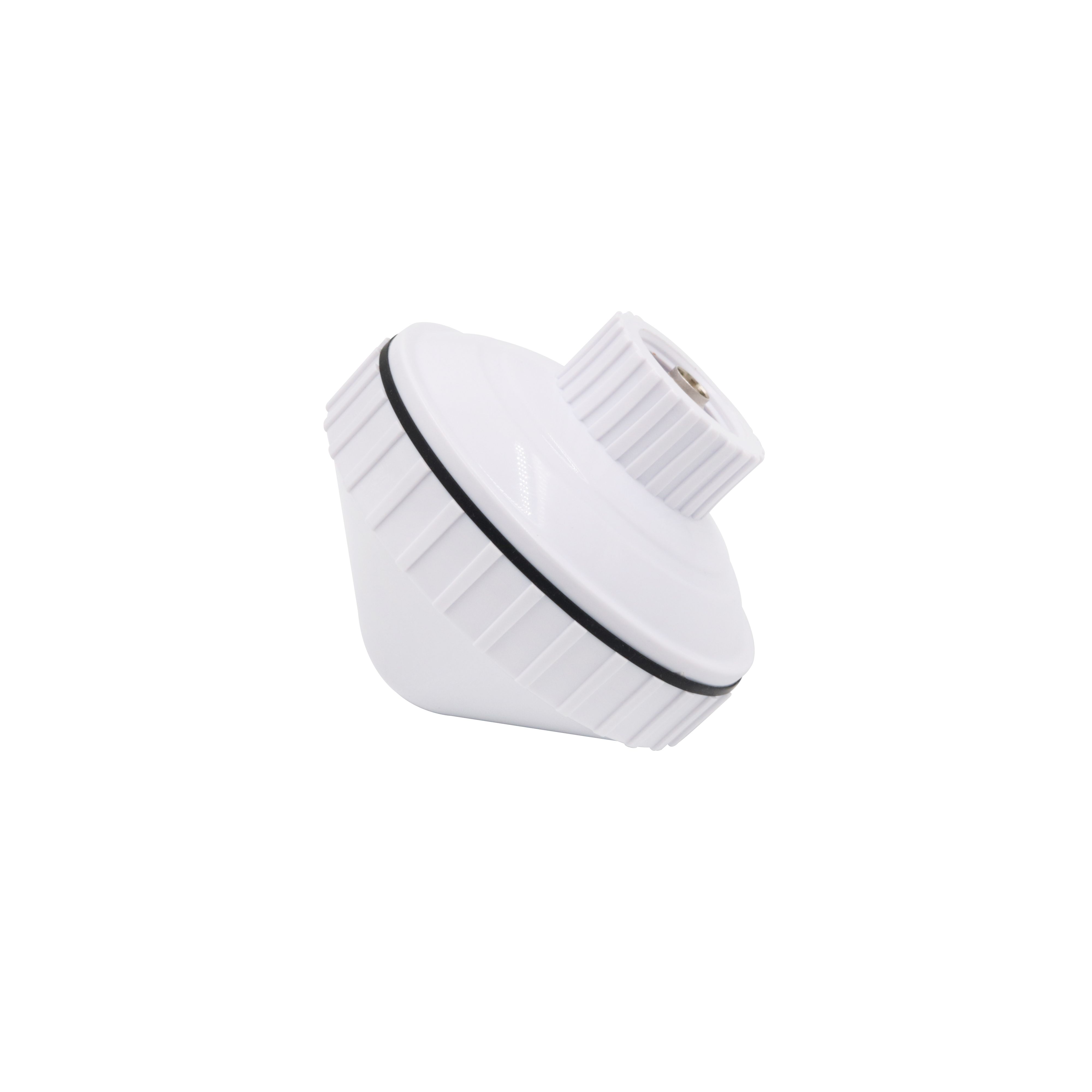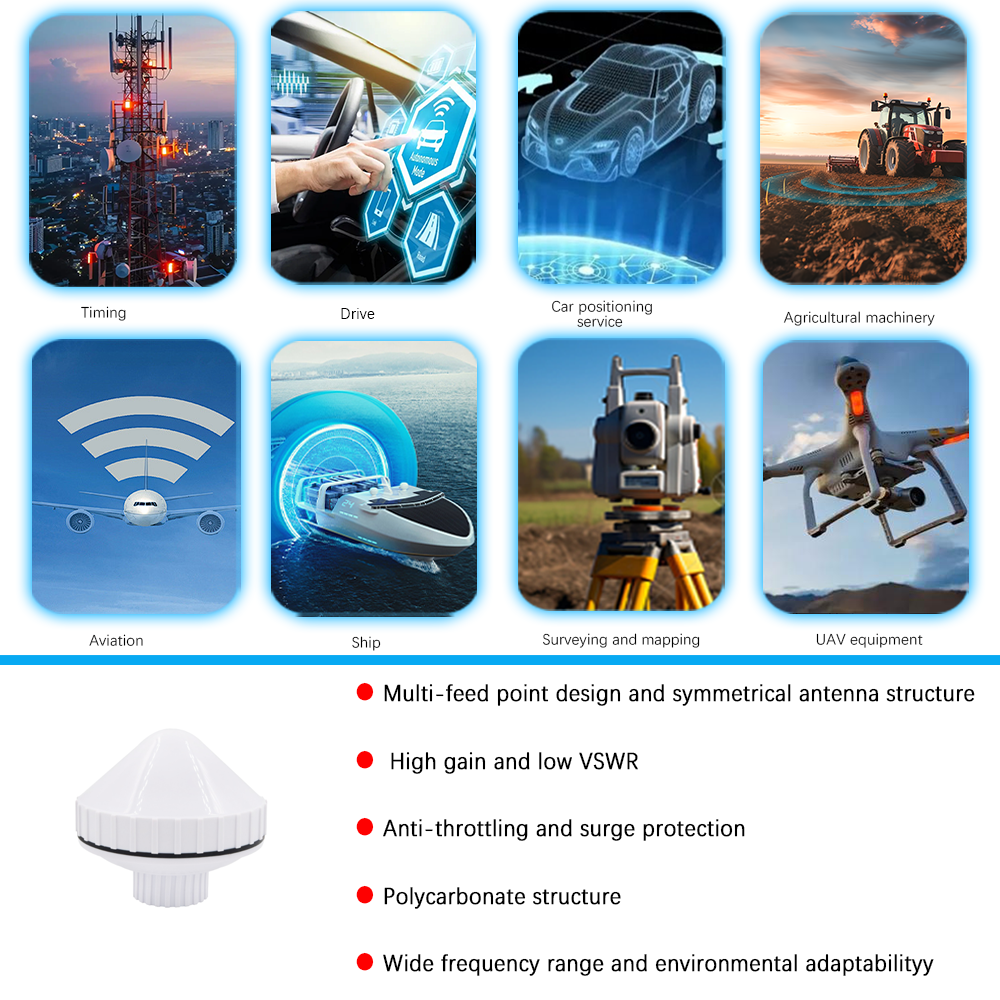At the core of the Marine GNSS Antenna’s functionality is its frequency range, carefully tuned to 1575.42 MHz (GPS L1), 1561.098 MHz (BeiDou B1), and 1602 MHz (GLONASS G1). This multi-constellation coverage ensures compatibility with three of the world’s primary global navigation satellite systems, reducing reliance on a single network and enhancing signal redundancy. In marine environments, where satellite visibility can be obstructed by high waves, fog, or vessel superstructures, accessing multiple constellations is critical. For example, if GPS signals are temporarily disrupted by atmospheric interference, the antenna seamlessly switches to BeiDou or GLONASS, ensuring uninterrupted timing and positioning data. This redundancy is especially vital for timing applications, where even brief signal loss can disrupt synchronized systems like shipboard communication networks, radar, or automated navigation tools.
The antenna’s gain of 40 dBi is a standout feature, underscoring its ability to amplify weak satellite signals significantly. Gain, measured in decibels relative to an isotropic radiator (dBi), quantifies the antenna’s capacity to focus signal energy toward satellites, a critical advantage in marine settings where signals must travel through layers of moisture, salt, and atmospheric distortion. A high gain of 40 dBi ensures that even faint signals from low-elevation satellites—common in oceanic regions with unobstructed horizons—are captured and strengthened, maintaining timing accuracy within milliseconds. This is paramount for applications like time-sensitive data transmission, where synchronized clocks across a vessel’s systems (e.g., GPS receivers, radar, and communication equipment) prevent data corruption and ensure operational coherence.
Complementing its high gain is a VSWR (Voltage Standing Wave Ratio) of ≤2.0, a key indicator of efficient signal transfer. VSWR measures the ratio of reflected to transmitted signal power, with a lower value indicating minimal loss. A VSWR of 2.0 means that approximately 90% of the signal is transmitted or received, with only 10% reflected—essential for preserving signal integrity in marine systems, where long cable runs (from the antenna to onboard receivers) can degrade signals. This efficiency ensures that the amplified GNSS signals remain strong and clear, even after traveling through coaxial cables routed through the vessel’s structure, supporting precise timing calculations.
The Marine GNSS Antenna is purpose-built to withstand the unique challenges of life at sea, starting with its IP67 waterproof rating. This certification guarantees protection against dust ingress and immersion in up to 1 meter of water for 30 minutes, a critical feature in environments where salt spray, rain, and wave splash are constant threats. The antenna’s housing—constructed from rugged materials designed to resist corrosion—prevents water damage to internal components like the low-noise amplifier (LNA) and ceramic radiating element, ensuring long-term reliability. Whether mounted on a ship’s mast, deck, or superstructure, it remains operational through storms, heavy rainfall, and saltwater exposure, reducing maintenance needs and downtime.
Central to the antenna’s performance is its 25×25×6 mm GNSS ceramic element, a compact yet powerful component that serves as the primary signal receiver. Ceramic antennas are prized in marine applications for their high dielectric constant, which allows for efficient signal capture in a small form factor. The 25×25×6 mm size balances sensitivity with space efficiency, making it suitable for installation on vessels of all sizes, from small fishing boats to large container ships. The ceramic material also exhibits stable electrical properties across temperature fluctuations, ensuring consistent performance in extreme heat (e.g., tropical climates) and cold (e.g., polar regions), where signal propagation can be disrupted by thermal interference.
The TNC female connector further enhances the antenna’s marine suitability. TNC connectors feature a threaded coupling mechanism that creates a secure, weatherproof seal, preventing water and salt from infiltrating the connection point. Unlike push-on connectors (such as BNC), TNC connectors resist vibration and accidental disconnection—critical in rough seas where vessel movement can strain cables. This robust connection ensures uninterrupted signal flow between the antenna and the ship’s timing or navigation systems, minimizing data loss and maintaining synchronization.
For flexible installation, the antenna includes a bracket mounting system, allowing secure attachment to various surfaces on a vessel. The bracket is typically constructed from corrosion-resistant materials like stainless steel, ensuring it withstands saltwater exposure without degradation. This versatility in mounting—whether on a vertical mast, horizontal deck, or angled superstructure—enables optimal positioning to maximize satellite visibility, a key factor in maintaining strong signal reception. By allowing adjustment of the antenna’s orientation, the bracket ensures it can “see” as many satellites as possible, even when the vessel is pitching or rolling.
Focus on Timing: Synchronization at Sea
While the Marine GNSS Antenna supports positioning, its primary application in timing sets it apart. Precise timekeeping is the backbone of modern marine operations, enabling synchronized communication, navigation, and data logging. For example:
Shipboard Communication: Radio and satellite communication systems rely on synchronized clocks to avoid signal interference and ensure clear transmission. The antenna’s accurate timing data keeps these systems aligned, preventing dropped calls or garbled messages—critical for emergency communications.
Radar and Collision Avoidance: Radar systems use timing data to calculate the distance to other vessels or obstacles. Even a millisecond error in timing can lead to miscalculations, increasing collision risks. The antenna’s precise timing ensures radar readings are accurate, supporting safe navigation in busy shipping lanes.
Data Logging and Reporting: Commercial ships must log navigation data, cargo movements, and engine performance for regulatory compliance. Timestamps from the antenna ensure these logs are accurate and auditable, avoiding penalties or disputes.
Offshore Drilling and Surveying: In offshore oil rigs or seabed mapping operations, synchronized timing coordinates the work of multiple systems (e.g., drilling equipment, sonar, and positioning tools), ensuring operations proceed safely and efficiently.
The antenna’s ability to provide timing data with sub-millisecond accuracy stems from its multi-constellation support and high gain. By comparing signals from GPS, BeiDou, and GLONASS, it calculates UTC (Coordinated Universal Time) with exceptional precision, serving as a reference clock for all onboard systems. This synchronization is especially valuable in remote oceanic regions, where terrestrial time sources (like cellular networks) are unavailable.
The Marine GNSS Antenna’s design and performance make it indispensable across diverse marine sectors:
Commercial Shipping: Cargo ships and tankers rely on the antenna for precise timing to synchronize navigation systems, ensuring they follow planned routes and avoid collisions. Accurate timing also supports fuel efficiency by optimizing speed and course adjustments based on real-time data.
Offshore Energy: Oil rigs, wind farms, and underwater pipeline installations use the antenna to synchronize construction and maintenance operations. Timing data ensures that drilling, welding, and surveying activities are coordinated, reducing errors and improving safety.
Scientific Research: Oceanographic research vessels depend on precise timing to synchronize sensor data (e.g., water temperature, current speed, and marine life tracking). This synchronization allows scientists to correlate observations across different instruments, enhancing data accuracy.
Naval and Coast Guard Operations: Military and rescue vessels use the antenna’s timing data to coordinate missions, communicate securely, and track targets. In search-and-rescue operations, synchronized timing ensures that rescue teams and distressed vessels share accurate positional updates, reducing response times.
Recreational Boating: Even small pleasure craft benefit from the antenna’s timing capabilities, supporting reliable GPS navigation and communication with coastal authorities, especially in remote areas.




































































 Language
Language
 En
En Cn
Cn Korean
Korean

 Home >
Home > 








 18665803017 (Macro)
18665803017 (Macro)













